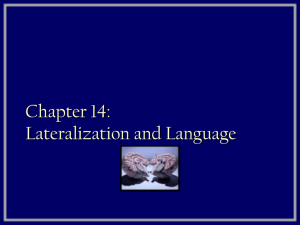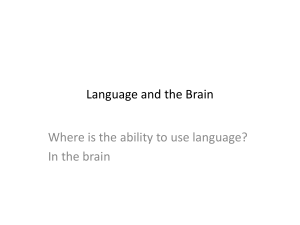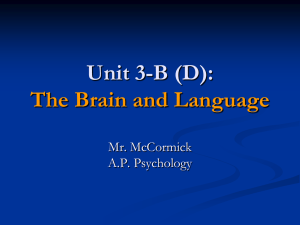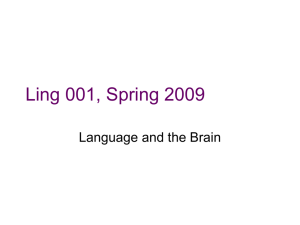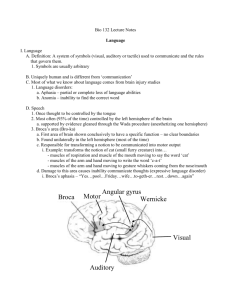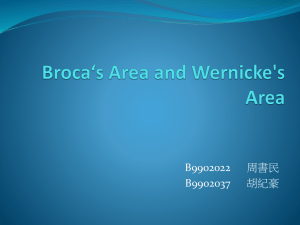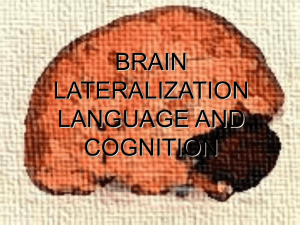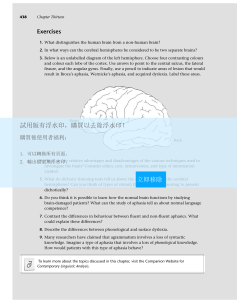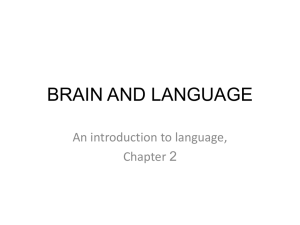Lecture 8 - Personal.kent.edu
advertisement
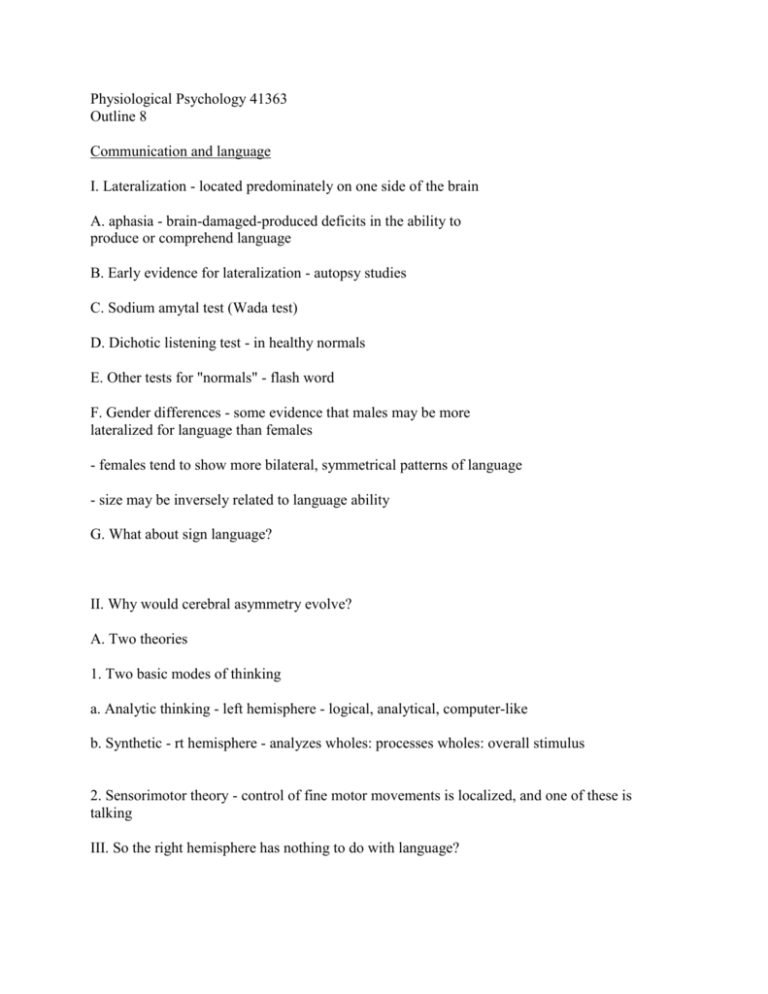
Physiological Psychology 41363 Outline 8 Communication and language I. Lateralization - located predominately on one side of the brain A. aphasia - brain-damaged-produced deficits in the ability to produce or comprehend language B. Early evidence for lateralization - autopsy studies C. Sodium amytal test (Wada test) D. Dichotic listening test - in healthy normals E. Other tests for "normals" - flash word F. Gender differences - some evidence that males may be more lateralized for language than females - females tend to show more bilateral, symmetrical patterns of language - size may be inversely related to language ability G. What about sign language? II. Why would cerebral asymmetry evolve? A. Two theories 1. Two basic modes of thinking a. Analytic thinking - left hemisphere - logical, analytical, computer-like b. Synthetic - rt hemisphere - analyzes wholes: processes wholes: overall stimulus 2. Sensorimotor theory - control of fine motor movements is localized, and one of these is talking III. So the right hemisphere has nothing to do with language? A. No, damage to rt hemisphere makes it difficult to read maps, perceive spatial relations, and recognize geometrical forms: also, subtle aspects of language comprehension IV. Strict localization theories - aspects of language localized to specific areas of the brain A. Broca's area - small area of the frontal cortex in front of primary motor cortex and lateral fissure: center of speech production 1. damage to this area caused expressive deficits 2. have trouble with function words 3. can say content words - nouns verbs adjectives and adverbs 4. 3 typical symptoms a. aggramatism - difficulty with correct grammar b. anomia - word finding difficulty c. articulation difficulty B. Wernicke's area - left temporal lobe behind the auditory cortex: responsible for just language or speech comprehension 1. Damage to this area resulted in receptor deficits - trouble understanding - meaningless speech 2. Wernicke felt this area was actually the location of memories of the sequences of sounds that constitute words C. transcortical sensory aphasia - can recognize and repeat what other people say but can't comprehend, trouble comprehending meanings, and inability to convert thoughts to words D. Conduction aphasia - arcuate fasciculus connects Wernicke's to Broca's V. Wernicke-Geschwind model 1. Problems a. Overlap between symptoms of Brocas and Wernickes b. surgical removal of Broca's area does not result in long-term aphasia c. CAT and MRI scans d. PET scans VI. Reading and writing disorders A. Reading and writing skills of aphasics resemble their speaking abilities B. Alexia - inability to read -how do we read? -2 mechanisms 1. whole-word reading - recognize a familiar word by shape and pronounce it 2. phonetic reading - with unfamiliar words we recognize individual letters and the sounds they produce C. Dyslexias - problems with reading 1. Acquired dyslexias - damage to brains of people who already know how to read a. surface dyslexia b. phonological dyslexia c. word-form dyslexia d. direct dyslexia e. comprehension without reading 2. Developmental dyslexias - become apparent when kids are learning to read -planum temporale
